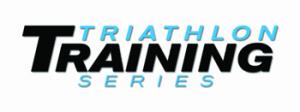- Details
- Written by Paul Hekimian
- Category: Swim Training
- Hits: 2291
- Details
- Written by Gerry Rodrigues
- Category: Swim Training
- Hits: 7313
Swim paddles are advertised and promoted as swim-aids building power and strength. They’re also alleged to lengthen the simmer’s stroke at the front end: the paddle’s large surface area causing a long glide, or feeling of glide, commonly quantified as Distance per Stroke (DPS).
Over the last 20 years, the reengineering and development of the modern-day paddle has resulted in an architecture with significantly larger surface areas and varying shapes, each design touting its own benefits. We’ve reached a stage now where paddles are either large, very large or super-sized. In assessing the benefits of such paddles, remember they’re created and developed by national level swim coaches, to train their national level athletes.
In my view, most of these large paddles do not benefit triathletes or non-elite swimmers.
Almost all triathletes and non-elite swimmers lack the strength, power, and specific muscular endurance to drive large paddles through the water. Most will compensate by dropping their elbows quickly or otherwise resorting to an improper stroke. These incorrect repeated movements only serve to imprint poor mechanics. The swimmer may feel he or she is training harder but there is almost never any real gain technically.
They also slow stroke rate, the number of swim strokes per minute, which is already a limiter for many triathletes. Low stroke rates equal slow swimming; lower stroke rates, even slower swimming. A separate post will address stroke rate as it deserves its own discussion.
For these athletes and swimmers, these larger paddle types are harmful.
I recall one swim workout with a well-known pro triathlete, a front-of-pack swimmer, who was using a then newly introduced paddle, a behemoth in mass and shaped like a stealth bomber. His stroke breakdown was immediately obvious to me, his elbows collapsing to his ribcage. I tried to point out that these giant paddles were not working for him and, in fact, were actively undermining his training. In retrospect, I should have minded my own business: he would have no part of my advice and fervently believed that the manufacturer’s claims worked for him. He knew he was swimming faster – which he was, with the paddles. Without them, he would be left with no extra benefits and a wrecked technique. Like most triathletes and non-elite swimmers, he would have been much better off – ultimately building more speed, strength and specific endurance – by abandoning these ‘trash can lid’ paddles and simply using pull buoys and an ankle strap.
Naturally, in an article this short, I’m generalizing. Some paddles do have their place in the training schedule. If you want to try paddles, find a design that works for your particular mechanics, and one that fits your hand. Generally, smaller is better.
Disclaimer: My notes are written for the general swim and triathlon audience. Some statements are quite broad while others are specific. Every athlete, every swimmer is different. Learn to recognize what applies particularly to you so that you can make the decisions that enable you to train and compete most effectively.
Gerry Rodrigues has been coaching triathletes since 1983, and presently coaches “Tower 26” www.tower26.com. He’s a US Masters coach of the year; a world and national masters champion; coach and advisor to world champion open water swimmers, triathletes, and Olympians; former owner of SWIM Magazine and publisher of Swimming World and Swimming Technique Magazines. He says: “I do not have a monopoly on information, rather continue to learn from athletes and other coaches, loving every day of it.”
- Details
- Written by Ray Barrios
- Category: Swim Training
- Hits: 2904
- Details
- Written by Konrad Riberio
- Category: Swim Training
- Hits: 3195
- Details
- Written by Ian Murray and Jamie Silber
- Category: Swim Training
- Hits: 3760
Now that the triathlon season is winding down, most of us are already planning next season’s events and looking forward to improving upon this year’s performances. If your really want to make a dramatic difference in your triathlon training, you have to focus your efforts on your limiters – or what sports are your worst! The sport of triathlon is very complex: planning your training, equipment choices, and even race selection, play a big part in having a successful season of racing. LA Tri Coaches Ian Murray and Jamie Silber have been coaching triathletes for over 20 years and know how critical it is to correctly plan and train for a triathlon. Together with top Hollywood professionals, they have produced the most comprehensive and informative triathlon training DVDs ever made.
LATC Member receive a special 20% discount on all DVD products: Use this link to go to the LATC discount page to get the 20% off discount Code. http://www.latriclub.com/members/discounts

